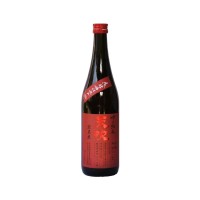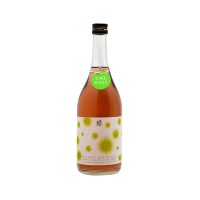Rosé sake is more than just a trend – it is an elegant fusion of tradition and innovation. With its delicate color, versatile aromas, and adaptability in food pairings, it is the perfect choice for connoisseurs seeking something special. But what makes rosé sake so unique? Let’s delve into the world of this exceptional sake variety.
How is rosé sake made?
The characteristic color of rosé sake occurs naturally and is the result of special production methods. Typically, two different rice varieties are used for rosé sake: one is a premium variety like Omachi, Yamada Nishiki, or Miyama Nishiki, known for its structure and flavor profile, making it ideal for sake brewing. These rice varieties are usually polished to a degree of 60-70%, resulting in a clean and elegant taste. The second rice variety, such as Shikokumai (a purple rice) or Kodaimai (“ancient rice”), remains unpolished. This is because the pigments responsible for the pink hue are concentrated in the outer layers of the rice grains. These pigments, particularly anthocyanins, are the same compounds responsible for the vibrant colors of red grapes and berries, giving rosé sake its delicate shade.
In some cases, the color is achieved through the addition of specific koji molds, such as Aspergillus oryzae or Aspergillus luchuensis, which influence the fermentation process in unique ways. These molds not only contribute to the pink coloration but also enhance the development of complex flavor notes. Alternatively, the color can be achieved through precise control of fermentation temperature and maturation time.
A further distinction from classic sake varieties lies in the duration and temperature of fermentation. These are finely tuned to bring out the delicate pink color and fruity, floral notes. The result is a sake that is not only a visual delight but also a new gustatory experience.
Taste & aroma – a sensory experience
Rosé sake captivates with a flavor profile that is as refined as it is surprising. Its delicate color is mirrored in its aromas: floral notes like cherry blossom or rose, paired with fruity hints of raspberries, strawberries, or pomegranate. Often, a slight acidity adds freshness, making the sake highly versatile.
On the palate, rosé sake feels silky and light, with a balanced profile that is neither too sweet nor too dry. It’s perfect for enjoying on its own or pairing with complementary dishes.
Food pairing – the perfect match for rosé sake
Rosé sake is a true all-rounder when it comes to food pairings. Its fruitiness and freshness make it the ideal companion for a variety of dishes:
1. Lightly smoked dishes:
- Smoked duck breast with cranberry sauce.
- Salmon tartare or smoked halibut.
2. Asian cuisine:
- Sushi with tuna or scallops.
- Vietnamese summer rolls with peanut dip.
- Miso-grilled vegetables or tofu.
3. Vegetarian and vegan dishes:
- Grilled eggplant slices with sesame paste.
- A fresh beetroot salad with walnuts and orange segments.
4. Desserts:
- Raspberry tart or strawberry mochi.
- Panna cotta with pomegranate sauce.
- Dark chocolate with a pinch of salt.
The perfect moment to enjoy
Rosé sake is not just for special occasions but also perfect for relaxing evenings at home. Serve it slightly chilled in an elegant glass to showcase its color and aromas fully. Or try it as a base for a refreshing cocktail – mix it with soda, a splash of lime, and fresh berries.
Conclusion – Think Pink!
Rosé sake stands for stylish enjoyment. Its unique color, refined aromas, and versatility make it a delightful addition to any table. Whether as a gift, a companion to a special dinner, or the highlight of a relaxed evening, rosé sake is always the right choice.
Try it for yourself and discover the world of rosé sake. Think Pink – and savor life to the fullest!





